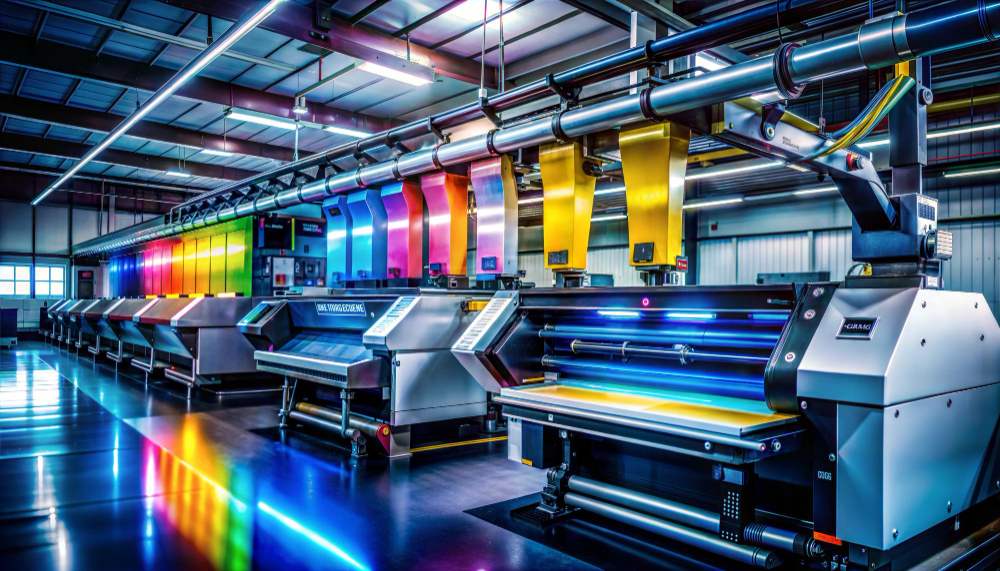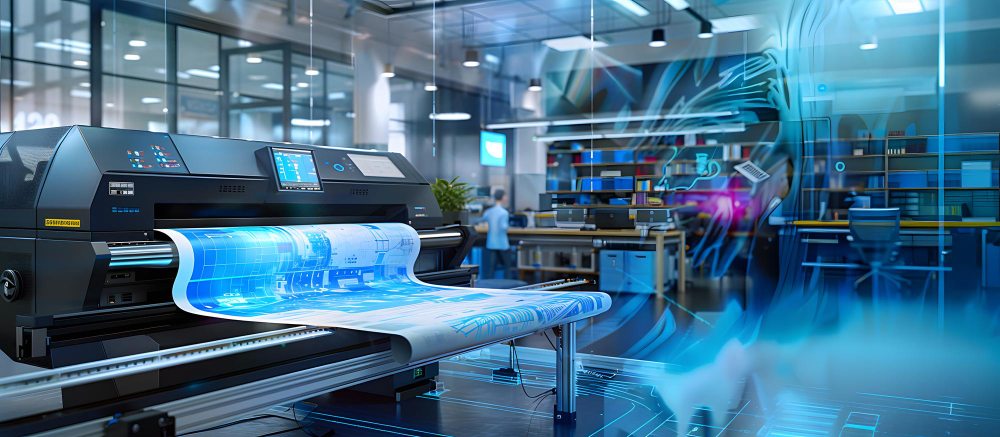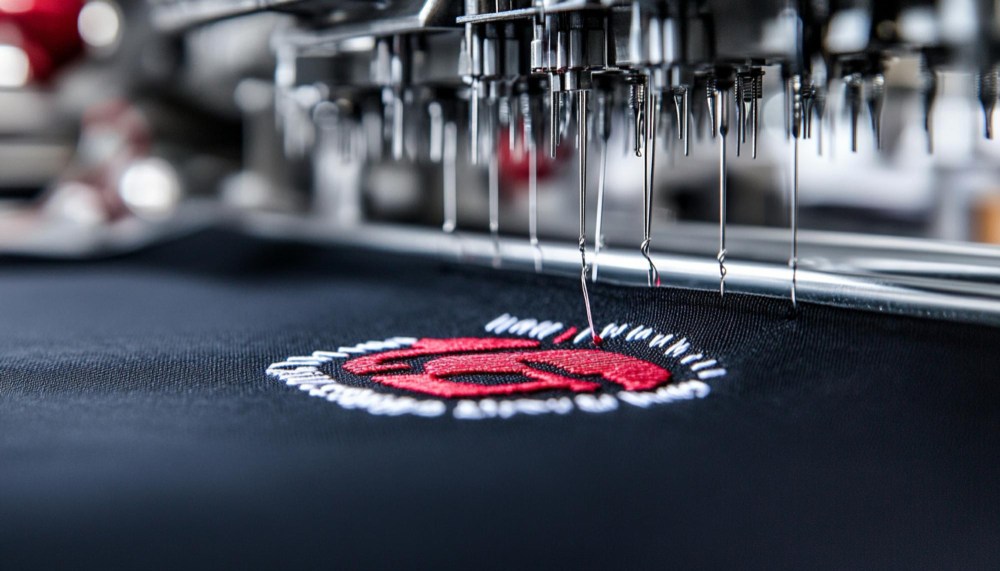In Print on Demand (POD) business, printing technology is the very ‘soul’ of the product. A beautiful design becomes meaningless if the wrong printing method is chosen, leading to inaccurate colors, peeling, or poor durability. Therefore, understanding and selecting the right printing technology not only helps sellers optimize costs but also improves product quality, builds customer loyalty, and drives sales growth. This article will share the key factors to consider, introduce popular printing technologies, and guide you in choosing the most suitable option for each POD business need.

Factors to Consider When Choosing a Printing Technology
Before diving into the details of each method, it’s important to equip yourself with a framework for evaluation. There is no single technology that is ‘the absolute best’- only the one that is ‘most suitable’ for your specific needs. Ask yourself the following questions:
Product Type
There is no single printing technology that is the “king” of all. Each method is designed to shine on specific materials and product types. Choosing the wrong one can result in poor print quality, peeling, or inaccurate colors.
- Cotton Apparel (T-shirts, Hoodies, Sweatshirts): With its natural, breathable fibers, cotton is the “home ground” of Direct-to-Garment (DTG) printing. Water-based inks penetrate deep into the fabric, producing prints that are soft, sharp, and breathable. In addition, Digital Transfer Film (DTF) printing is also a highly flexible and effective option, delivering vibrant colors even on dark fabrics.
- Polyester Products (Sportswear, Mugs, Phone Cases): This is the exclusive domain of Sublimation printing. Under high heat, the ink transforms into gas and bonds permanently with the polyester fibers or the polymer coating of the product. The result is vivid, permanent colors that cannot peel off, with a completely natural surface feel.
- Accessories and Other Materials (Tote Bags, Caps, Canvas): With such material diversity, DTF proves superior thanks to its ability to “handle” almost any fabric, from coarse canvas to blended textiles. For large-volume orders with simple designs, Screen Printing remains an economical solution.
Order Quantity
Your business model will determine which printing technology delivers the highest cost efficiency.
- Small or Single Orders (Typical POD Model): Digital printing methods such as DTG and DTF are the perfect choices. They require no upfront setup costs, allowing you to print each product with a unique design without increasing the overall cost. This is the true essence of Print on Demand.
- Bulk Orders: When dealing with hundreds or even thousands of units using the same design (e.g., company uniforms, event shirts), Screen Printing becomes highly effective. Although the initial setup cost for creating screens is relatively high, the cost per product decreases significantly afterward, maximizing profit for large-scale orders.
Colors and Design Details
How complex is your design? The printing technology must be capable of faithfully reproducing your creative vision.
- Multicolor, Complex Images, Gradient Effects: DTG and DTF are the true champions. Similar to a high-end inkjet printer, they can reproduce millions of colors and photographic details with vibrant accuracy.
- Simple, Few-Color, Vector Designs: Screen Printing delivers exceptionally sharp, durable color blocks with excellent coverage. However, since each color requires a separate screen, this method is less suitable for highly multicolored designs.
- Designs Requiring Absolute Sharpness: Sublimation and DTG generally produce the most detailed and crisp results, making them ideal for high-quality graphic designs.
Durability and User Experience
A beautiful design that fades after just a few washes can ruin your brand. Durability and the hand-feel of the print are key factors in creating a premium customer experience.
- Top Durability: Sublimation leads the way in durability since the ink becomes a permanent part of the product. High-quality Screen Printing and DTF also offer strong durability, excellent stretch resistance, and minimal cracking.
- User Experience: Customers love the soft, breathable feel of DTG prints (on light fabrics) and Sublimation. In contrast, Screen Printing and DTF create a thin film layer on the fabric’s surface, but modern advancements have made these layers thinner and more comfortable.
Cost and Profitability
Ultimately, every decision comes down to economics. You need to balance production costs with the perceived value for customers.
- Modern Technologies (DTG/DTF): The cost per product may be higher due to equipment and material expenses, but they allow you to sell at higher prices thanks to superior quality and the ability to fulfill single-item orders.
- Traditional Technology (Screen Printing): Extremely low cost per unit when printing in bulk, making it ideal for highly price-competitive markets. However, for small orders, the cost per product is often higher compared to other printing methods.
- Pricing Strategy: Don’t just chase the lowest production cost. Ask yourself: How much are your customers willing to pay for a product with excellent, long-lasting print quality? Investing in better printing technology is ultimately an investment in brand value and customer loyalty.
Popular Printing Technologies in POD

Direct to Garment (DTG) Printing
This is considered the “backbone” technology of the POD apparel industry, especially for cotton T-shirts.
How it Works: Similar to an inkjet printer for paper, a DTG printer sprays water-based ink directly onto the fabric surface. The ink penetrates into each fiber and is then cured with a heat press. For dark-colored fabrics, a layer of white underbase ink is applied first so that the design colors appear more vibrant.
Advantages
- Exceptional image quality: Perfectly reproduces complex, multicolor, and photo-realistic designs.
- Unlimited colors: Print millions of colors without additional costs.
- Soft hand-feel: Ink penetrates the fabric, giving a natural, breathable, non-bulky finish.
- Ideal for single orders: No setup costs, making it perfect for the POD model.
Disadvantages
- Best only on cotton fabrics: Works optimally on fabrics with high cotton content (at least 80%).
- High ink cost: Especially the white underbase layer for dark garments, which increases production cost.
- Limited print areas: Difficult to print on complex areas like sleeves or collars.
Best Suited For
- T-shirts, hoodies, and sweatshirts made of 100% cotton or cotton blends.
- Designs involving photographs, artworks, or detailed graphics with gradients.
- Fashion brands focusing on premium print quality and a soft, natural feel.
Digital Heat Transfer Printing (DTF – Direct to Film)
DTF is a rising star, often called a “game-changer” in the POD industry thanks to its incredible versatility.
How it Works: The design is first printed onto a special PET film (known as DTF film) using DTF inks. A layer of hot-melt adhesive powder is then applied to the back of the wet print and cured. Finally, the film is placed onto the garment and heat-pressed, transferring the design from the film to the fabric.
Advantages
- Prints on any fabric: Cotton, polyester, fleece, leather, canvas—you name it, DTF works! This is a major advantage over DTG.
- Vivid, sharp colors: The white adhesive underbase makes colors pop on any fabric, even dark ones.
- High durability: Prints are stretchable, resistant to cracking, and remain vibrant after multiple washes.
- Competitive cost: Often cheaper than DTG when printing on dark fabrics.
- Flexible placement: Easily applies to small logos or detailed areas like sleeves and collars.
Disadvantages
- Less natural hand-feel than DTG: Creates a thin film layer on the fabric surface, which can feel slightly “plastic” and less breathable compared to DTG.
Best Suited For
- All types of apparel (T-shirts, windbreakers, polyester sportswear, hats, tote bags, etc.).
- Logos, slogans, and vector graphics requiring sharpness and vibrant colors.
- Sellers looking to expand their product range beyond cotton T-shirts.
Sublimation Printing (Dye-Sublimation)
This technology dominates the field of printing on polyester fabrics and hard-surface materials with a polymer coating.
How it Works: The design is first printed onto special sublimation transfer paper using sublimation inks. The paper is then placed on the product and pressed under high heat and pressure. The heat transforms the ink from a solid directly into a gas, allowing it to bond deeply with the molecular structure of the material. Once cooled, the ink solidifies and becomes a permanent part of the product.
Advantages
- Permanent durability: Prints never fade, peel, or crack because they become part of the fibers.
- Extremely vibrant colors: Produces sharp, vivid images with a wide color gamut.
- Completely natural feel: The product surface feels untouched by printing, remaining fully breathable.
- Edge-to-edge printing (All-Over Print): Easily enables designs that cover the entire surface.
Disadvantages
- Material limitations: Only works on polyester (or high-polyester blends) and hard surfaces with a polymer coating.
- Color limitations: Works best on white or light-colored substrates. Since sublimation inks are translucent, they will not show well on dark backgrounds.
Best Suited For
- Sportswear and jerseys (polyester fabrics).
- Mugs, tumblers, ceramic tiles, phone cases (with sublimation coating).
- All-over-print products such as leggings, blankets, and towels.
Digital Embroidery (Embroidery)

Embroidery is not “printing,” but it is an essential premium decoration method in POD.
How it Works: A computerized embroidery machine reads a digitized design file and uses needles and threads to recreate the design directly on the fabric surface.
Advantages
- Premium, professional look: Adds a luxurious and high-value appeal to products.
- Extremely durable: Embroidered threads last longer than most printing inks.
- Unique 3D effect: Creates depth and texture unmatched by any printing technology.
Disadvantages
- Detail limitations: Cannot reproduce very fine details, gradients, or photographic images.
- Higher cost: Requires more time and materials compared to printing.
- Size restrictions: Best suited for medium-to-small designs such as logos or text.
Best Suited For
- Caps, beanies, polo shirts, jackets, and backpacks.
- Simple logos, icons, and text-based designs.
- Premium branding and corporate uniforms.
Other Technologies
- UV Printing: Uses ultraviolet (UV) light to instantly cure ink during printing. Ideal for hard surfaces such as phone cases, wood, metal, and acrylic.
- Screen Printing: A traditional method that uses stencils (screens) to push ink through a mesh. Extremely cost-effective for large orders but less suitable for POD due to high setup costs.
Guide to Choosing the Right Printing Technology
At this point, you have all the essential information. Now it’s time to put it together and make your final decision
Quick Comparison of POD Printing Technologies
| Criteria | DTG (Direct to Garment) | DTF (Direct to Film Transfer) | Sublimation Printing | Embroidery |
| Fabric Type | Best on cotton | Works on all fabrics | Polyester, polymer-coated materials | Most fabric types |
| Fabric Color | Any color (best on light fabrics) | Any color | White / Light colors | Any color |
| Design Complexity | Very high (photos, gradients) | High (vivid colors) | Very high (photo-quality) | Low (logos, text) |
| Surface Feel | Soft, absorbed into fabric | Slightly raised, flexible | Completely natural | Raised, 3D textured |
| Durability | Good (requires proper care) | Very good, stretch-resistant | Permanent, never fades | Extremely durable |
| Cost / Single Orders | Medium – High (dark garments) | Medium | Medium | High |
| Best Products | Cotton T-shirts, hoodies | T-shirts, jackets, sportswear, hats | Sportswear, mugs, phone cases, all-over prints | Caps, polo shirts, jackets |
Guidelines for Choosing by Product Type
- If you sell cotton T-shirts for young customers with artistic, complex designs: Top Choice: DTG. It will perfectly reproduce your artwork with the soft hand-feel that customers love.
- If you want to offer a wide range of products-T-shirts, hoodies, polyester windbreakers, tote bags: Top Choice: DTF. This “all-in-one” technology allows you to expand your product catalog flexibly without switching suppliers.
- If you focus on sportswear, gym apparel, or personalized products such as mugs and phone cases: Top Choice: Sublimation. Its durability and vibrant colors on polyester are unmatched.
- If you aim to build a premium, minimalist fashion brand focusing on logos and durability: Top Choice: Embroidery. An embroidered logo on a cap or the chest of a polo shirt instantly elevates the product’s value.
Choosing the right printing technology is the key for POD sellers to create high-quality products, optimize costs, and enhance the customer experience. By understanding the essential factors and mastering the strengths and limitations of each method, you can easily select the most suitable printing solution for your business model.
For more detailed consultation on printing technologies, fulfillment strategies, and how to optimize POD sales performance, please contact FlashShip via hotline (+84) 943 024 337 or visit seller.FlashShip.net. Our team is always ready to provide fast, professional support and accompany you on the journey of building and growing a sustainable POD brand.

